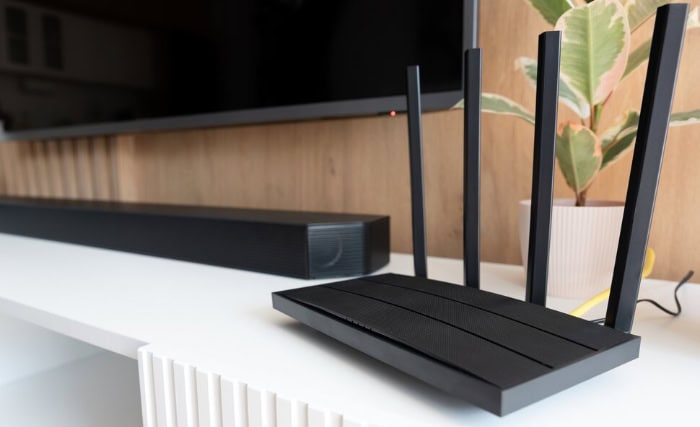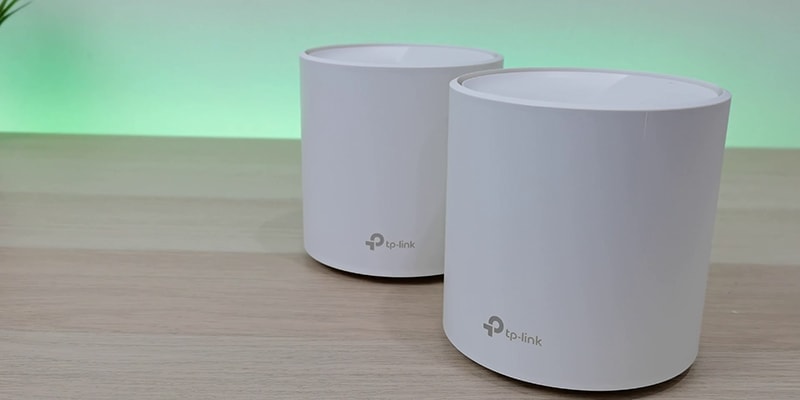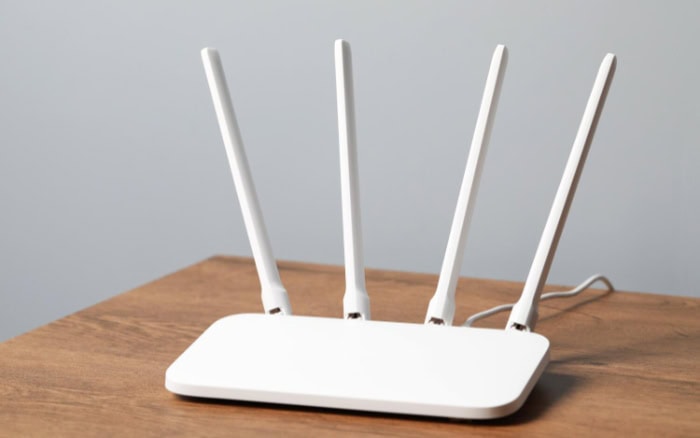2.4 GHz vs. 5 GHz Wi-Fi: The Speed and Range Tradeoff

Wi-Fi is the lifeline of modern living, but its performance can vary dramatically depending on the frequency band you use. The two most common options, 2.4 GHz and 5 GHz, each come with distinct benefits and limitations that can influence everything from speed and reliability to the range of your connection. Choosing the right band isn’t just about technical specifications, it directly impacts how smoothly your devices perform in everyday tasks like browsing, streaming, and gaming.
Technical Differences Between 2.4 GHz and 5 GHz
The two Wi-Fi frequency bands, 2.4 GHz and 5 GHz, are the foundation of modern wireless networking. Each operates differently, with advantages and limitations that directly affect how devices connect and perform. Factors such as speed, range, and signal characteristics make these bands suitable for various applications depending on the environment and the devices using the network.
Frequency and Signal Characteristics
The frequency of a Wi-Fi band determines how its signals behave in different conditions. The 2.4 GHz band uses a lower frequency, meaning it has a longer wavelength. This makes it better equipped to penetrate through walls, floors, and other physical barriers. As a result, devices connected to 2.4 GHz are more likely to maintain a stable connection in larger spaces or across multiple rooms.
On the other hand, the 5 GHz band uses a higher frequency and a shorter wavelength. While this enables faster data transmission, it also makes the signal more susceptible to disruption from physical obstructions. Walls and furniture can weaken 5 GHz signals significantly faster than 2.4 GHz, which is why 5 GHz works best when the connecting device is within closer proximity to the router.
Speed and Bandwidth
Speed is one of the most noticeable differences between 2.4 GHz and 5 GHz. The 5 GHz band offers considerably higher speeds, capable of supporting rates of over 1 Gbps, making it ideal for activities such as 4K streaming, data-intensive downloads, and online gaming that require minimal latency and high throughput. Its capacity to handle higher bandwidth also makes it suitable for households with multiple connected devices performing tasks that require substantial internet speeds.
Meanwhile, the 2.4 GHz band, though slower, provides sufficient speeds for everyday tasks like web browsing, checking emails, or streaming at lower resolutions. It generally maxes out at around 150 Mbps, depending on factors such as the router and the level of interference in the area. While this band may not be optimal for data-heavy uses, it serves more than adequately for lighter internet usage across a wider area.
Range and Coverage
Wi-Fi range is another area where the two bands differ significantly, influencing how well they perform in various environments. The 2.4 GHz band has a greater coverage area, reaching distances of around 65 feet in open spaces and maintaining decent performance even when there are physical barriers like walls. This extended range makes it particularly effective for connecting devices in larger homes or offices.
The 5 GHz band, while offering superior speed, sacrifices range and tends to be effective only at shorter distances. Its coverage usually tops out at around 49 feet in open spaces and is further reduced when there are obstructions. For this reason, 5 GHz is most effective for rooms closer to the router or in spaces with minimal physical barriers. When setting up a Wi-Fi network, understanding how distance and obstacles affect these bands is critical for ensuring consistent connectivity.
Interference and Congestion
Interference from other devices can play a significant role in the performance of Wi-Fi, especially in crowded environments. The 2.4 GHz band operates in a space that is often shared with other household electronics, such as Bluetooth devices, microwaves, and cordless phones. Additionally, the limited number of non-overlapping channels in the 2.4 GHz spectrum can make it a hotspot for network congestion, particularly in urban areas where multiple Wi-Fi networks compete for the same frequencies.
The 5 GHz band offers a major advantage here, with 23 non-overlapping channels, significantly reducing the chances of interference. Devices connected to 5 GHz networks experience less congestion, which is why this band is often recommended for dense environments like apartment complexes where many wireless networks are active. However, while 5 GHz generally suffers less interference, its shorter range makes it more dependent on router placement to maintain consistent performance.
Practical Use Cases and Device Compatibility

Choosing between 2.4 GHz and 5 GHz often depends on the specific tasks you aim to accomplish and the devices in your network. Each band serves distinct purposes, excelling in different scenarios, which makes understanding their practical applications essential.
Ideal Scenarios for 5 GHz
The 5 GHz band shines in situations where fast speeds and low latency are critical. It is particularly effective for tasks that demand high bandwidth, such as online gaming, 4K video streaming, and video conferencing. The ability of 5 GHz to transmit data at higher rates ensures smooth, uninterrupted performance for activities where even small delays or buffering can cause frustration. Gamers, for example, benefit from the reduced lag, while streamers enjoy crisp visuals without interruptions.
Urban environments often highlight the advantages of 5 GHz, especially in apartment complexes or areas with multiple Wi-Fi networks. The reduced interference and availability of more non-overlapping channels help avoid connectivity issues caused by crowded wireless spectrums. Devices that operate primarily in the same room as the router or in close proximity tend to perform exceptionally well with 5 GHz, as long as there are minimal physical obstructions to weaken the signal.
When to Prioritize 2.4 GHz
The 2.4 GHz band is the better choice for devices and scenarios that require extended coverage and reliable connectivity across larger areas. Its longer range and ability to penetrate walls and floors make it ideal for homes or offices with multiple rooms or levels. In such environments, using 2.4 GHz ensures that devices remain connected, even when they are far from the router.
Many smart home devices, such as smart bulbs, thermostats, and security sensors, rely on the 2.4 GHz band. These devices often prioritize range over speed, as their tasks typically involve small data transmissions. For instance, a smart light or sensor located in a far corner of your property can maintain a consistent connection to the 2.4 GHz network, even if it is farther away from your router. Households that prioritize coverage or support IoT devices often lean on the 2.4 GHz band to ensure all devices stay reliably connected.
Device Limitations
Device compatibility can influence how effectively you use the 2.4 GHz and 5 GHz bands. Many older devices built before 2009 may not support the 5 GHz frequency at all. Products like older laptops, smartphones, and older-generation Wi-Fi-enabled gadgets are often designed exclusively for the 2.4 GHz spectrum, which limits their ability to benefit from the faster speeds and reduced interference of 5 GHz networks.
Modern households with a mix of older and newer devices can overcome this limitation by using dual-band routers. These routers broadcast both 2.4 GHz and 5 GHz signals simultaneously, allowing compatible devices to take advantage of the faster 5 GHz band, while older devices remain connected via 2.4 GHz. Dual-band routers create a more inclusive environment, ensuring that all devices, regardless of their age or technical capabilities, can access the internet seamlessly.
Optimizing Network Performance

Achieving reliable and efficient Wi-Fi performance requires more than simply choosing between 2.4 GHz and 5 GHz. Proper optimization ensures that devices connect seamlessly and that the network operates at its full potential. Factors like router configuration, minimizing interference, and improving range all contribute to a stronger and more consistent connection.
Band Steering and Router Configuration
Advanced routers often feature band-steering technology, which allows devices to switch automatically between 2.4 GHz and 5 GHz frequencies based on their requirements. For instance, devices that perform bandwidth-heavy tasks such as gaming or streaming are guided to the 5 GHz band, while those needing more extensive coverage, like smart home devices, are directed to 2.4 GHz. This automation simplifies network management and ensures that each device benefits from the most suitable connection.
Some scenarios, however, benefit from manually assigning devices to specific bands. In households with multiple users performing critical tasks, such as video conferencing or gaming, manually placing high-priority devices on the 5 GHz band can prevent slower devices from interfering with their connection speed. Accessing your router’s settings allows for greater control over how devices connect, enabling specific configurations tailored to your needs.
Reducing Interference
Interference can significantly weaken Wi-Fi signals, especially in environments with numerous electronic devices or overlapping networks. The placement of the router plays an important role in minimizing interference. Positioning the router away from devices like microwaves, cordless phones, and Bluetooth hubs prevents signal disruption, particularly on the 2.4 GHz band, which is more prone to interference from other household electronics.
Using a Wi-Fi analyzer can help identify congested channels, specifically on the 2.4 GHz frequency, where fewer non-overlapping channels exist. Many routers allow users to manually select a less congested channel to reduce interference from neighboring networks. This adjustment improves performance, especially in areas with a high density of Wi-Fi users, such as apartment buildings.
Range Extension Strategies
Maintaining strong Wi-Fi signals throughout larger homes or offices can be challenging, especially when relying on the 5 GHz band, with its limited range. Mesh networks are a practical solution for extending coverage seamlessly. These systems consist of multiple access points distributed across the property, creating a unified network that eliminates dead zones and retains high-speed connectivity across all areas. Mesh setups are particularly beneficial for households with multiple floors or rooms located far from the primary router.
For situations where wired connections are feasible, using a wired backhaul can significantly bolster the performance of a 5 GHz network. By connecting additional access points to the router via Ethernet cables, the load on the wireless network is reduced, and the signal remains strong even in spaces with thick walls or other obstructions. Wired backhauls are especially effective in maintaining consistent performance for devices located far from the router, improving signal reliability across the entire network.
Careful attention to router placement, interference reduction, and range extension ensures not only faster speeds but also a more reliable connection for all devices within the network. Balancing these factors enhances the performance of both the 2.4 GHz and 5 GHz bands, creating a smoother online experience for any environment.
Troubleshooting Common Issues

Even with a well-optimized network, occasional issues can disrupt Wi-Fi performance. Factors like overcrowded channels, weak signals, or compatibility mismatches can lead to slower speeds or unreliable connections. Identifying the cause of these problems and applying targeted fixes can restore the network's efficiency and ensure devices operate smoothly.
Slow Speeds on 2.4 GHz
Slower speeds on the 2.4 GHz band often result from overcrowded channels. Many Wi-Fi networks and devices like Bluetooth gadgets or microwaves share this frequency, which leads to congestion and reduced performance. Identifying and switching to a less-used channel can improve connectivity. Modern routers offer features to automatically select the least crowded channel, but manual adjustment via the router settings may yield more precise results.
In homes or spaces with a high concentration of Wi-Fi networks, moving critical devices to the 5 GHz band can resolve speed issues. The 5 GHz band experiences less interference and provides higher data rates, making it better suited for devices performing bandwidth-heavy tasks. However, devices relying on the broader range of 2.4 GHz can still perform adequately once the issue of channel congestion is addressed.
Weak 5 GHz Signal
Signal strength on the 5 GHz band can weaken significantly over distance or when blocked by walls and furniture. A router placed in a suboptimal location, such as a corner of a room or near an obstruction, can lead to poor connectivity for devices farther away. Repositioning the router to a central, elevated location can help ensure more consistent signal coverage. Placing the router in an open space with minimal interference enhances the line-of-sight required for the 5 GHz band to perform at its best.
If repositioning does not fully resolve the issue, adding range extenders or transitioning to a mesh network can provide the additional coverage needed. Devices that experience frequent signal drops due to weak 5 GHz strength may also benefit from switching to the 2.4 GHz band, which offers better penetration and range.
Compatibility Errors
Compatibility issues arise when devices cannot connect to the 5 GHz band, often due to older hardware lacking support for modern Wi-Fi standards like 802.11a/n/ac/ax. Devices built before the widespread adoption of dual-band Wi-Fi frequently operate exclusively on the 2.4 GHz frequency, limiting their ability to take advantage of the faster 5 GHz band.
Ensuring that devices are compatible with 5 GHz requires checking their specifications for supported Wi-Fi standards. Upgrading outdated devices or adding Wi-Fi adapters can enable connectivity to newer bands. For households with both older and newer devices, dual-band routers provide a flexible solution, allowing compatible devices to connect to 5 GHz while older ones remain connected to 2.4 GHz without interrupting overall network performance.
Addressing these common issues can significantly enhance Wi-Fi performance, allowing devices to connect more reliably and achieve optimal speeds. Proper troubleshooting ensures that both 2.4 GHz and 5 GHz bands function as intended, meeting the diverse needs of modern networks.
Conclusion
Choosing between 2.4 GHz and 5 GHz Wi-Fi bands is a balancing act between speed, range, and reliability. The 2.4 GHz band excels in offering broader coverage and better performance across barriers like walls, making it ideal for larger spaces and IoT devices. On the other hand, the 5 GHz band delivers faster speeds and reduced interference, which are perfect for high-performance tasks such as streaming, gaming, or video conferencing, especially in environments with minimal physical obstructions.
Each band has its strengths and trade-offs. While the 2.4 GHz band provides stability over longer distances, it faces channel congestion and interference. Conversely, the 5 GHz band avoids these issues but has a more limited range and struggles with physical barriers. Taking advantage of both bands allows users to allocate tasks and devices strategically.
A dual-band router is strongly recommended for flexibility, as it enables simultaneous use of both bands, catering to a diverse set of needs. Whether boosting coverage for IoT devices or prioritizing high-speed performance for gaming and streaming, a dual-band setup ensures a seamless and reliable connection regardless of the task or environment.


